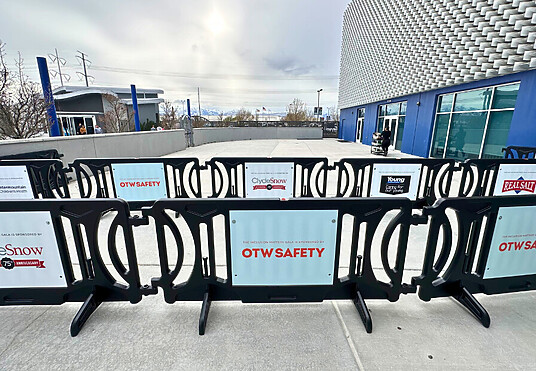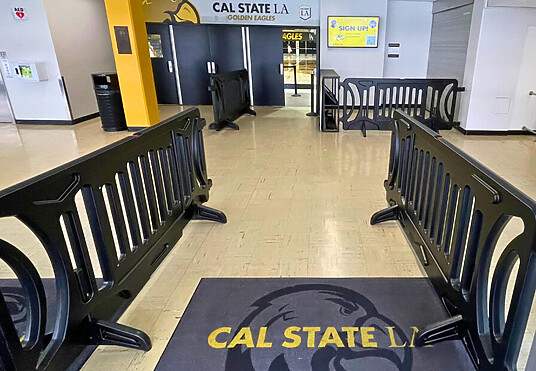Be aware for Distracted Driving Month (and beyond)

Distracted Driving Awareness Month is coming to a close, but the need for awareness and intentionality while driving remains.
April is host to a good number of month-long awareness campaigns. Among them, you’ll find Earth Month, National Stress Awareness Month, National Donate Life Month, Autism Acceptance Month, and many other important causes. One that resonates deeply with the safety industry community is Distracted Driving Awareness Month.
Distracted Driving Awareness Month has become a much-needed reminder of the dangers of driving and multitasking. While doing two or more things at once might be considered impressive at work or home, it’s anything but while on the road.
Driving distracted can be deadly. In 2022 alone, there were 3,308 people killed and an estimated additional 289,310 injured in motor vehicle traffic crashes involving distracted drivers. To put it in perspective: eight percent of fatal crashes, twelve percent of injury crashes, and eleven percent of all police-reported motor vehicle traffic crashes in 2022 were reported as caused or affected by distracted driving. Five percent of all drivers involved in fatal crashes were reported as distracted at the time of the incident (1). This widespread epidemic doesn’t seem to decrease as the years go by.
What is distracted driving?
According to the Centers for Disease Control and Prevention (CDC), there are three main types of distracted driving. The first is visual, which includes anything that takes your eyes off the road. You might look at a passenger beside or behind you, look down at your phone or GPS, or rubberneck while driving past an accident.
The second is manual, which is using your hands for anything other than the steering wheel. This includes changing your music, using an electronic device in any capacity, eating or drinking, and more.
The third is cognitive; this type of distracted driving is not as apparent as the first two, but it is still dangerous nevertheless. Cognitive distractions might include daydreaming, mentally stressing about work (or anything else), or being distracted by an overload of noise (think screaming kids or loud music).

Why is this month important?
The CDC reports that nine people in the United States are killed every day in crashes that involve a distracted driver. A Federal Motor Carrier Safety Administration (FMCSA) study shows that CMV (commercial motor vehicle) drivers texting while driving are 23.2 times more likely to be involved in an accident than those not driving distracted.
With people traveling on the road every day, distracted driving is one of the deadliest phenomena of recent years. Highlighting the issue with Distracted Driving Month each April is an attempt to place focus on ways that will change the behavior completely. It’s tackled in various ways: public awareness, legislation, enforcement, and education are all used in an effort to decrease the number of accidents and deaths caused by distracted driving.
What is OTW Safety doing to help?
Cities, states, and the federal government are all working towards roads free of distractions. The National Highway Traffic Safety Administration (NHTSA) has evaluated the effectiveness of enforcing distracted driving laws in four states, in addition to safety ads on the radio, news, and social media. This study, conducted from 2010-2013, showed a decrease of nearly half of observed driver cell phone use in the four communities (2).
According to NHTSA Fatality Analysis Reporting System (FARS) data, the fatality rate had been declining for nearly 30 years before progress stalled for a decade; after 2020, however, fatalities have risen exponentially and continue to do so. In 2022, the U.S. Department of Transportation launched the National Roadway Safety Strategy (NRSS), another step forward in its mission to “ensure America has the safest transportation system in the world”. Risky behavior is a leading factor in roadway fatalities; while intoxicated driving and speeding top the list for problematic human behavior, distracted driving ranks nearly as high. The NRSS not only aims to reduce risky behaviors that contribute to collisions and accidents, but seeks to curtail the number of transportation-related deaths in the United States entirely.
OTW Safety is dedicated to safety on and off the road, and we are proud to partner with businesses and organizations that pursue it diligently. Our mission at OTW Safety is to enhance and strengthen public safety by providing the most innovative safety equipment on the market. Our values as a company reflect that; in particular, our drive for continual innovation helps us embrace progress and help cultivate safer environments for all. As a leader in the safety industry, we use our platform for change to represent all stakeholders and champion safety initiatives (such as the NRSS).
Follow us on our socials as we highlight safety initiatives and share information to help keep our roads safe.
Here’s to a safer tomorrow and an end to the need for a Distracted Driving Awareness Month!
- Traffic Safety Facts Research Note: Distracted Driving 2022. (n.d.). https://crashstats.nhtsa.dot.gov/Api/Public/ViewPublication/813559
- Chaudhary, N.K., Connolly, J., Tison, J., Solomon, M., & Elliott, K. (2015). National Highway Traffic Safety Administration. Evaluation of the NHTSA Distracted Driving High-Visibility Enforcement Demonstration Projects in California and Delaware [PDF – 72 pages] (DOT HS 812 108). U.S. Department of Transportation, Washington, DC.
- Chaudhary, N.K., Casanova-Powell, T.D., Cosgrove, L., Reagan, I., & Williams, A. (2012). National Highway Traffic Safety Administration. Evaluation of NHTSA Distracted Driving Demonstration Projects in Connecticut and New York [PDF – 80 pages] (DOT HS 811 635). U.S. Department of Transportation, Washington, DC.


